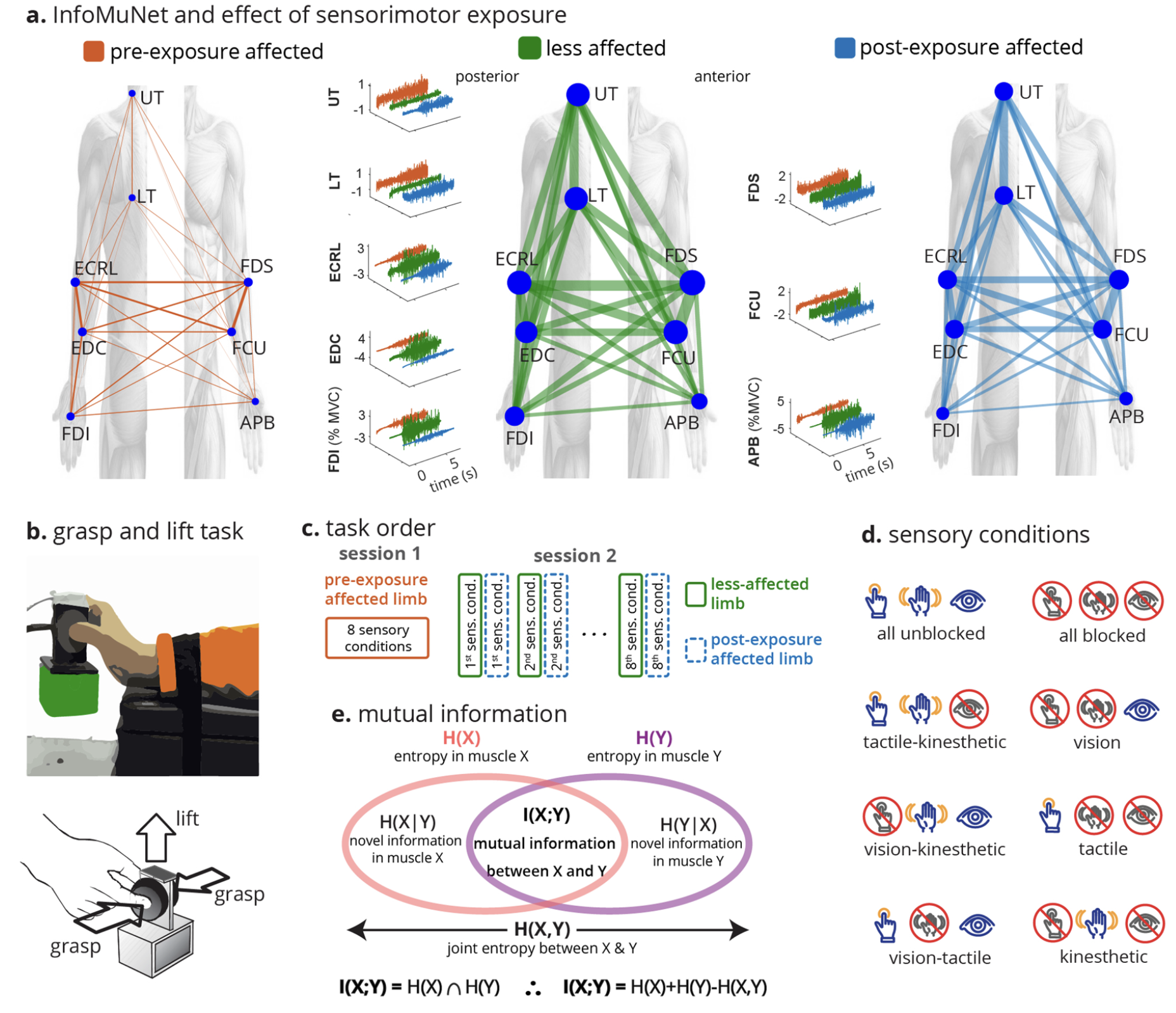Download
Abstract
Sensory information is critical for motor coordination. However, understanding sensorimotor integration is complicated, especially in individuals with impairment due to injury to the central nervous system. This research presents a novel functional biomarker, based on a nonlinear network graph of muscle connectivity, called InfoMuNet, to quantify the role of sensory information on motor performance. Thirty-two individuals with post-stroke hemiparesis performed a grasp-and-lift task, while their muscle activity from 8 muscles in each arm was measured using surface electromyography. Subjects performed the task with their affected hand before and after sensory exposure to the task performed with the less-affected hand. For the first time, this work shows that InfoMuNet robustly quantifies changes in functional muscle connectivity in the affected hand after exposure to sensory information from the less-affected side. > 90% of the subjects conformed with the improvement resulting from this sensory exposure. InfoMuNet also shows high sensitivity to tactile, kinesthetic, and visual input alterations at the subject level, highlighting its potential use in precision rehabilitation interventions.
The effect of fiducial mismarking on EEG source estimation.

Citation
@ARTICLE{OKeeffe2022-uu,
title = "Nonlinear functional muscle network based on information theory
tracks sensorimotor integration post stroke",
author = "O'Keeffe, Rory and Shirazi, Seyed Yahya and Bilaloglu, Seda and
Jahed, Shayan and Bighamian, Ramin and Raghavan, Preeti and
Atashzar, S Farokh",
journal = "Sci. Rep.",
publisher = "Nature Publishing Group",
volume = 12,
number = 1,
pages = "1--14",
month = jul,
year = 2022,
}